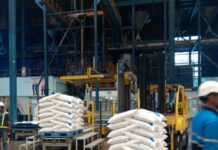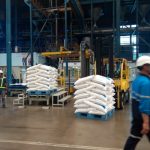GAS PRICE DIFFERENCE CALLS FOR GREATER SUGAR PRODUCTION
This Friday, the sugar futures market in NY closed out the week at 23.68 cents per pound on the futures contract for October/2023, accumulating a 24-point low against the previous week’s closing. The fall amounts to a little more than 5 dollars per ton. The other maturities on the NY price curve that runs up until May/2026 closed out at lows between 11 and 28 points.
The real devalued 2.87% against the dollar (R$4.8657) in the weekly accumulated. So, the NY average values converted into real per ton appreciated R$31 per ton along almost all the curve.
The sugar market has been trying to recover over the week, but as it usually happens in commodities, the fundamentals end up having the “lousy habit” of overriding the narratives of all nuances. Even with the purchases by Egypt that made it look like there was a need for sugar over the short term, the market didn’t hold out. The funds liquidated 10,767 lots and still had 133,535 long lots last Tuesday. As NY showed falls over the last three days, it’s reasonable to think that the funds must have sold an additional volume of 8,000 to 10,000 lots.
The climate – namely El Niño – is the only event strong enough to raise the price curve to levels seen at the end of April this year. I wouldn’t bet on that. It’s too risky to rely on that possibility. The main reason is that no climate change in sugarcane areas of the Center-South has been seen and nothing noteworthy went down in India either. Therefore, it looks like that the chance of an actual price increase is starting to fall behind.
Just as an exercise, if we look at the Black & Scholes model, the delta informed in the daily report of the NY exchange, the chance of October/2023 trading at 27.50 cents per pound is less than 10%. Now March/2024 has a greater possibility (because we have more time until the maturity of the options and because March/2024 is more expensive than October/2023): a little more than 30%. Well, 30% is the approximate probability – according to soccer mathematicians – of my Santos soccer team being relegated from the top division of the Brazilian Championship this year. But we still have a long way to go. And I’m not talking about soccer, but about our market!
It’s interesting to note that the accumulated crushing in the Center-South until July 16, according to UNICA, was 258.3 million tons of sugarcane – pretty close to the crushing average of the last six crops (2017/18 to 2022/23) which was 257.6 million tons of sugarcane. In these last six crops, the accumulated crushing up until this period of the year represented between 41.5% and 49.5% of all the crushed sugarcane that year. It’s a different crop, with better productivity, with more sugarcane and the bets are that production can come close to 620 million tons of sugarcane, according to a pretty active trading company on the market.
The question everyone is asking is about the possibility of having all the sugarcane crushed within the timetable of the mills. The answer is pointing to a resounding “no”. Limited by the capacity of crystallization and of storage, the solution would be sugarcane left to be crushed next year. According to sources linked to the production, the maximum capacity of crystallization in the Center-South is 735 million tons of sugarcane. With an 85% use and a sugar mix of 48%, the maximum volume of sugar production hits 40 million tons of sugar. To be seen.
Ethanol is still devalued. However, there is strong evidence that Petrobras will have to change gas price at the refineries because the price difference on the foreign market has been increasing. Since the real has devalued against the dollar this week, it would be appropriate (to avoid future hassles for the general management) for the company to correct the prices. If this happens, effects on sugar price are not expected, but just a price adjustment too underestimated by the company. According to BioAgencia, the difference between the foreign market and the price at the refinery set by Petrobras at the start of this week was R$0.6466 per liter!!
Worse than this disparity are the comments full of nonsense and contradictions by the Minister of Mines and Energy according to whom “we have done away with the criminal policy”, meaning the end of the foreign parity used by Petrobras since 2016. For these leftists, a good company is one that loses money. That’s why they love state-run companies. This minister is an accounting technician, a lawyer and a former police chief, overriding skills – as we know – to enable someone to be minister of Mines and Energy.
Despite the somewhat constructive scenario on the short and mid-terms, depending on the climate to see price bounce back up, the sector is constructive on the long term. Be it because of the increase in per capita sugar consumption in Asian countries (except for China); be it because of the consumers of other sweeteners that compete with sugar in relation to health hazards (there is an episode in a series called “History: 101” on Netflix that is about the health harms caused by the HFCS); be it by the optimistic perspective of the widespread use of biofuels in the next decades, with special emphasis for the SAF (Sustainable Aviation Fuel). It’s very difficult not to become optimistic about the sector. But there is a long way to go until then.
Do you want to learn everything about ethanol from independent people? Archer Education is sponsoring on September 20 (Wednesday) and September 21 (Thursday), 2023 in Ribeirão Preto, the course Ethanol Marketing Intelligence on the Fuel Market, given by Tarcilo Rodrigues. This is the third edition of a course that has already become a benchmark in the sector due to the strategic view of all the ethanol marketing chain, from supply to service stations, detailing the major points of pricing, stocks and demand all through the supply chain. Contact priscilla@archereducationçcom.br for further information.
You all have a nice weekend.
To read the previous episodes of World Sugar Market – Weekly Comment, click here
To get in touch with Mr. Arnaldo, write on arnaldo@archerconsulting.com.br

















Can sugar be vacuum packed in Tyvek VCI Film